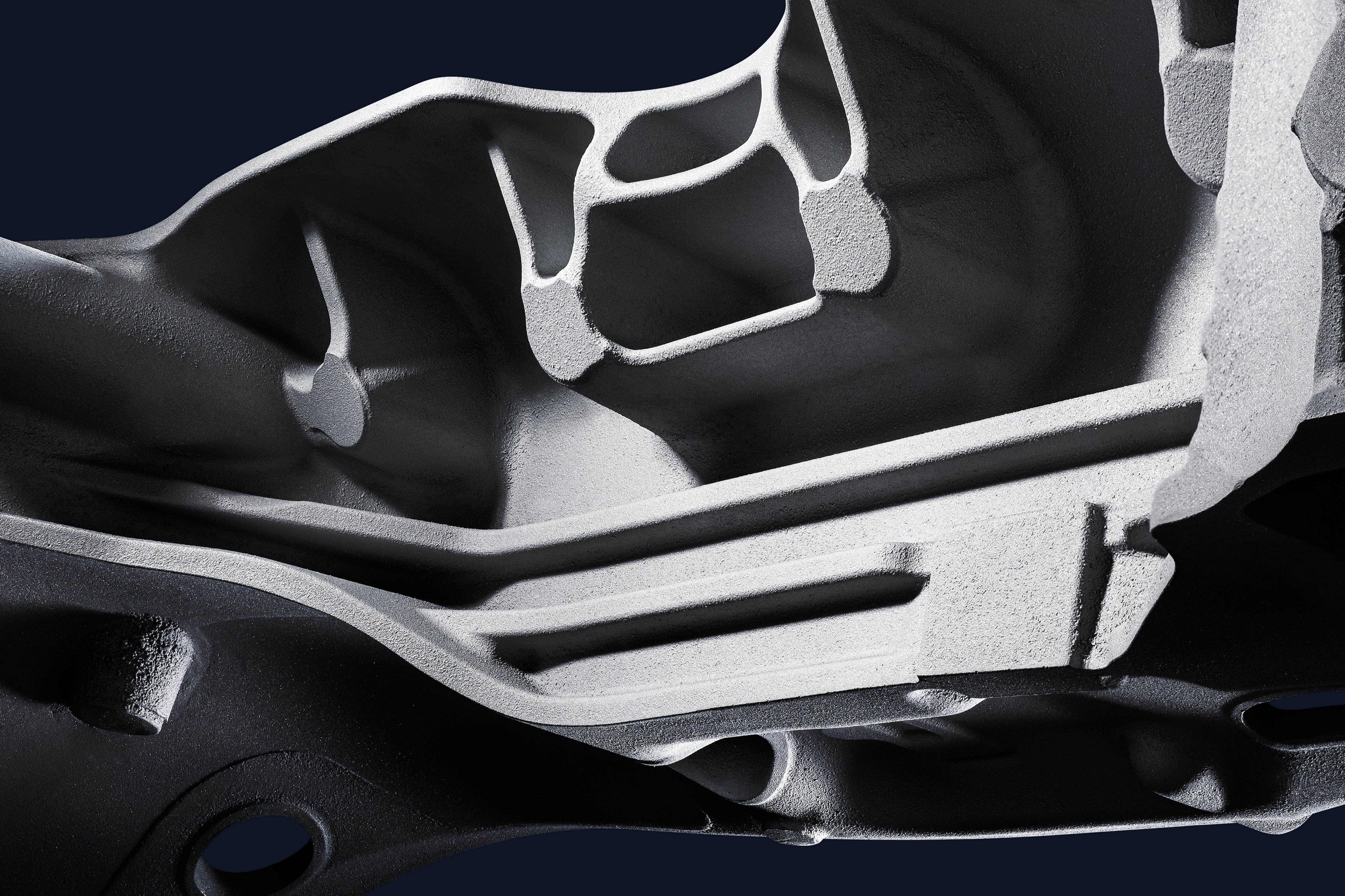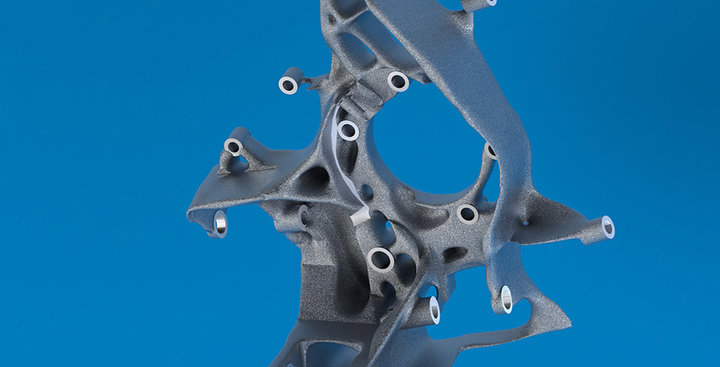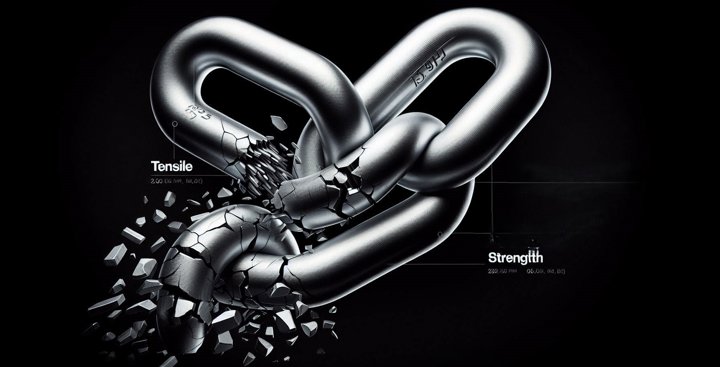

Lightweight Electric Vehicle Architecture, LEVA, was a grant funded project, led by Lotus, where Sarginsons was tasked with developing the first Digital Twin Casting Simulation, to predict localised post cast structural properties and map these onto downstream CAE models for use in LS-DYNA studies: for crash or extreme loading events, such as lateral kerb strike.
The world's first accurate simulation, of post cast properties, allows component designers to produce optimal structural properties, using precise simulations, not lower boundary material properties, and to simulate distortion caused by post cast heat treatment. In LEVA parallel, coupon testing was undertaken, by way of test beams cast by Sarginsons Industries to ensure that the predicted properties were representative: test beams were manufactured and tested statically and dynamically in three-point bend test rigs. Simulated predictions were validated within 2%.

A CFD mesh was generated for factors such as temperature, fluid flow, solidification and cooling. Real world variables were input as definitions into the simulation, from data sets developed by Sarginsons, to ensure more accurate results.
The mechanical properties of the test beam were checked against test bar results and calibrated as needed. DfM changes were made to improve performance and simulations rerun with these new geometries and / or definition settings. Since a CAD model was used, the CAE mesh was aligned with the CFD mesh, allowing further meshes to be generated to show TYE mechanical properties or stress / strain results.
All test bars underwent T6 heat treatment but significant differences in mechanical properties were achieved due to differences in density indices, oxide levels and heat treatment parameters: longer aging increases tensile and yield strength at the expense of elongation.
The TYE (tensile, yield, and elongation) material properties used in LEVA were A356 T6 (EN AC 42100K T6) material for a baseline test beam CAE assessment were proof stress 210MPa, UTS 260 (MPa) and a minimum elongation of 4%.
These are the baseline lower bound material properties that would typically be used as a basis to assess castings in this material for proof of abuse/crash loadings. For the predicted mapped structural properties, following casting and heat treatment simulation, these vary for each element in the casting simulation.
The TYE properties were banded to limit the number of downstream materials generated and the resolution modified to provide higher differentiation. Once mapped, the stress/strain curves were modified to reflect the banded TYE properties. Having developed baseline and mapped property CAE model meshes, LS-DYNA models simulated the proposed quasi-static and dynamic 3-point bend tests. These were analysed to determine baselines and mapped material property force/deflection and energy absorption predictions for these tests.
The casting simulation software was successfully used to simulate the casting process at Sarginsons Industries and guide manufacturing design and post heat treatment processes. Innovative CAE methods were developed by Sarginsons to predict and map post-cast material properties for use in down-stream simulations.
The potential benefits of the ‘digital twin’ were demonstrated during design development, via CAE down-stream CAE simulation and in coupon material property tests.
LEVA proved Digital Twin Simulations successfully simulated, in low porosity casting, TYE mechanical characteristics as well as fatigue and stress data.



Torrington Avenue, Coventry,
West Midlands, CV4 9AG